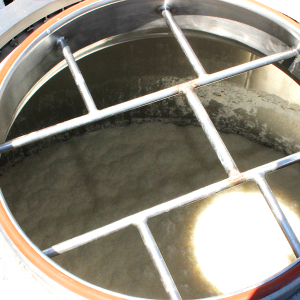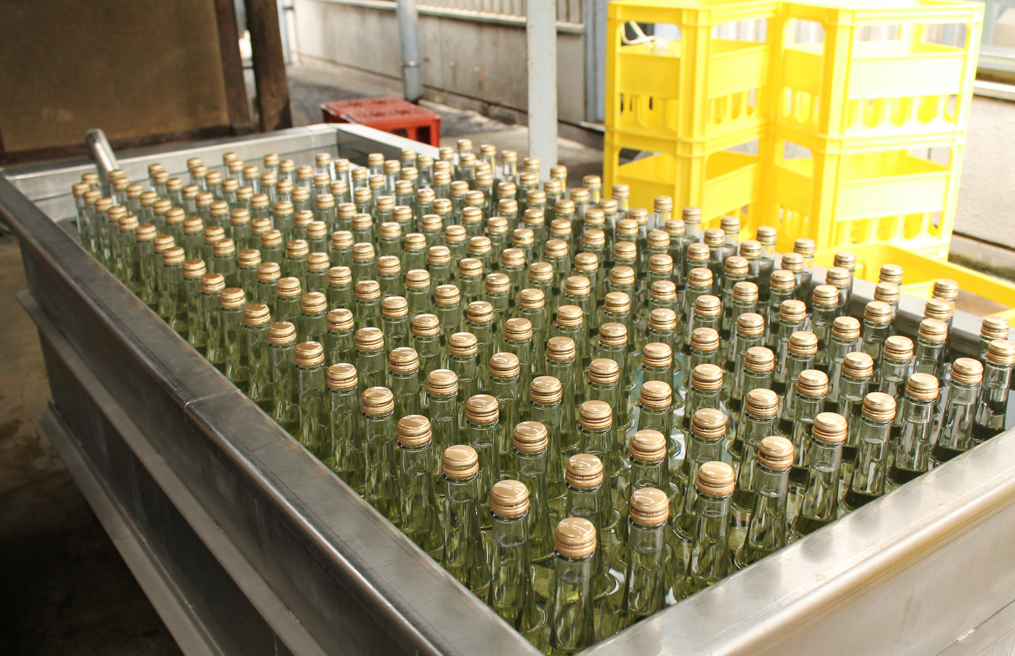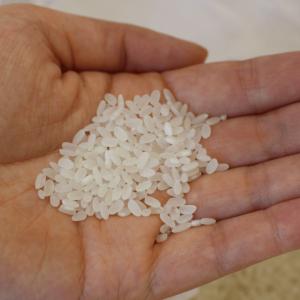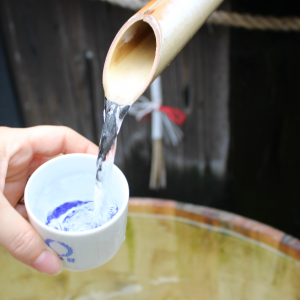
Before conventional sake is shipped, it is pasteurised twice. There are exceptions but we will cover those in more detail later in this article. The process is called Hiire in Japanese.
1. Hiire
Hiire literally translates to ‘heat treatment’ and that is pretty much what happens to the sake. The sake is not actually exposes to a naked flame. It is instead immersed in hot water heated to between 60-65℃ for about 30 minutes. The purpose of this heat treatment is to kill off all the remaining enzymes and halt the fermentation, thus stabilising the sake. Not doing so risks leaving behind bacteria that negatively impact the aroma and flavour of the end product.
Hiire is normally performed once before storage and once before bottling. There are various other variations which omit one or the other or both and are named accordingly.
・Sake which omits both Hiire is called “Namazake”
・Sake which omits the Hiire before bottling is called “Namazume” (LIT: bottled raw).
・Sake which omits the Hiire before storage is called Nama Chozo” (LIT: stored raw).
2. The history of Hiire
In Japan, the history of Hiire goes all the way back 1000 years to the Heian Era as is documented in literature from the time.
However, elsewhere in the world, ‘pasteurisation’ – as it’s referred in the West – was not discovered, by Louis Pasteur, until as late as the 19th Century. Any claims that he was the first to discover it fall slightly on its head. Impressive stuff!
3. Namazake vs Hiire
The surviving enzymes in Namazake impart a freshness, but they also alter the sake’s flavour over time. That is why a quick consumption along with refrigerated storage before and after opening is recommended.
Pasteurised sake on the other hand is comparatively milder and laid back.It is more than happy outside the fridge (away from sunlight and heat) and the flavour stays consistent for longer.
Trying both in equal measure makes the differences more apparent.
SAKETIMES INSIGHT
It has to be said that the words Hiire are very rarely put on the label (even in Japanese)- mainly because Hiire is more the default for anything that is not Nama. However ‘Namazake’ will almost always be labelled as such. Perhaps another reason is that compared to Hiire, its distribution is smaller and its something that is more likely to influence your purchase decision.
As for the appeal of Namazake, well let’s just say it’s delicious.It’s certainly not a question of which is best. But if you’ve yet to go raw, we would love you to try it; it is sure to alter your image of sake.





Comments